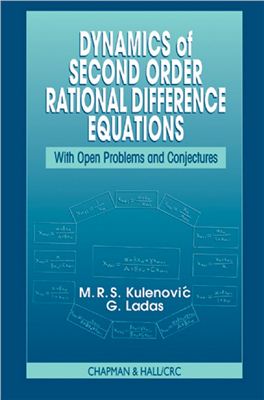Chapman and Hall/CRC, 2001. - 232 Pages.
This self-contained monograph provides systematic, instructive analysis of second-order rational difference equations. After classifying the various types of these equations and introducing some preliminary results, the authors systematically investigate each equation for semicycles, invariant intervals, boundedness, periodicity, and global stability. Of paramount importance in their own right, the results presented also offer prototypes towards the development of the basic theory of the global behavior of solutions of nonlinear difference equations of order greater than one. The techniques and results in this monograph are also extremely useful in analyzing the equations in the mathematical models of various biological systems and other applications. Each chapter contains a section of open problems and conjectures that will stimulate further research interest in working towards a complete understanding of the dynamics of the equation and its functional generalizations-many of them ideal for research projects or Ph.D. theses. Clear, simple, and direct exposition combined with thoughtful uniformity in the presentation make Dynamics of Second Order Rational Difference Equations valuable as an advanced undergraduate or a graduate-level text, a reference for researchers, and as a supplement to every textbook on difference equations at all levels of instruction.
This self-contained monograph provides systematic, instructive analysis of second-order rational difference equations. After classifying the various types of these equations and introducing some preliminary results, the authors systematically investigate each equation for semicycles, invariant intervals, boundedness, periodicity, and global stability. Of paramount importance in their own right, the results presented also offer prototypes towards the development of the basic theory of the global behavior of solutions of nonlinear difference equations of order greater than one. The techniques and results in this monograph are also extremely useful in analyzing the equations in the mathematical models of various biological systems and other applications. Each chapter contains a section of open problems and conjectures that will stimulate further research interest in working towards a complete understanding of the dynamics of the equation and its functional generalizations-many of them ideal for research projects or Ph.D. theses. Clear, simple, and direct exposition combined with thoughtful uniformity in the presentation make Dynamics of Second Order Rational Difference Equations valuable as an advanced undergraduate or a graduate-level text, a reference for researchers, and as a supplement to every textbook on difference equations at all levels of instruction.

